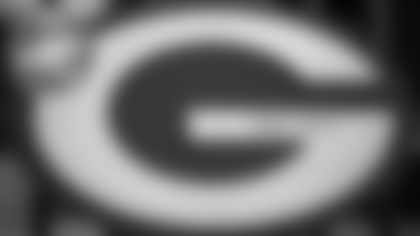Mike from Franklin, WI
Trading for John Jefferson in 1981 was arguably one of the bigger headlines for the Packers in the '80s. I've long wondered, and have yet to fully understand, why that trade didn't pan out. At the time of the trade Dan Fouts referred to Jefferson as "the Magic Johnson of the NFL." John Madden lauded the move, saying "It's almost too good to be true to have the two best wide receivers on the same team. If I had to pick two wide receivers to build my offense around, Lofton and Jefferson would be the guys. It's amazing to think that the Packers have them both." So, how did the Packers screw this up? Was this just a case of a talented receiver's career being snuffed out by a bad team, like Odell Beckham being traded to the Browns? Or, in your opinion, did the fault lie with Jefferson? He was only a few months older than James Lofton, so realistically he should not have been past his prime. Did he simply not want to be in Green Bay, and maybe that affected his production? As a beat writer during that time, I'm curious what your take was as this played out, and if your opinion has changed over the years.
Mike, you couldn't have framed your question any better. Jefferson's downturn with the Packers was certainly a headscratcher for all the reasons you mentioned.
I'll start by saying that when I made my presentation for James Lofton as a member of the Pro Football Hall of Fame selection committee, one of the points I made was that I believed Lofton would have been a star on any team, under any coach, in any system and in any era. In my mind, especially with wide receivers because there have been so many with through-the-ceiling stats, that was always one of my first considerations when voting.
I don't think that was true of Jefferson and, in a nutshell, why the trade for him didn't pan out for the Packers.
Jefferson played three years in San Diego and averaged 66 receptions for 1,144 yards, a 17.3 average per catch, and 12 touchdowns. Twice, as a rookie in 1978 and again in 1980, he led the league with 13 touchdown receptions. He also led in yards gained on receptions in '80 with 1,340.
In Green Bay, Jefferson was acquired in an early in-season trade in 1981 and then played only eight games in the strike-shortened 1982 season, so his per-season averages wouldn't offer a true comparison with his time in San Diego. Plus, his numbers weren't bad in 1983, his best and only 16-game season with the Packers, when he caught 57 passes for 830 yards, a 14.6 average, with seven TDs.
However, in his other three seasons, covering 34 games, he caught a total of 79 passes and scored four touchdowns. Beyond that, he finished his career in Cleveland in 1985, playing in only seven games and catching a mere three passes. Obviously, he didn't cut it with the Browns, either.
But over the years I've been as curious as you are about Jefferson's stay here and so I've sought answers to basically the same question that you raised from almost everyone in the know that I've interviewed.
Here were the answers.
Bob Schnelker, Packers offensive coordinator in Jefferson's final three seasons in Green Bay, said he thought part of it was that Jefferson never seemed happy in Green Bay. "He sort of had a chip on his shoulder," said Schnelker. "He didn't want to talk to anybody. Let's put it this way, he was hard to understand. You didn't know how to get to him. He'd make sensational catches, great plays, but you never knew what he was thinking."
Schnelker also surmised that Jefferson might have been one of those players who didn't take kindly to being overshadowed by another, better receiver. "He was in the backseat and I don't think he liked it," said Schnelker.
What about Jefferson's physical skills? "I don't think he ever had great speed," said Schnelker. "We didn't have anybody any better. Maybe we could have used somebody a little faster. But he had great hands. He made circus catches. He was that type of guy, but you didn't know if he was happy there."
"Very little," Dick Corrick, Green Bay's director of player personnel during Jefferson's four seasons, answered when asked if Jefferson had anything left in the tank at the end. "I think he lost it along the way. I think somebody wrote an article before we went into the playoffs against St. Louis (in '82) that we weren't utilizing J.J. and all this and that. Schnelker was working like hell to put things together – him and Lew (Carpenter) – trying to involve J.J. and, sh--, he couldn't get open. It didn't matter how much we schemed he just couldn't get open against certain coverages."
Was he out of shape? "He had that little butterball look to him," said Corrick before adding that he thought it was more of a speed issue. "He wasn't built to run," Corrick added. "He was kind of chubby looking. He was a good receiver. He just lacked the real burner speed. The separation thing was always a problem."
Carpenter, Packers receivers coach for Jefferson's four seasons in Green Bay, said he thought he was simply a better fit for Don Coryell's offense in San Diego than he was for Schnelker's vertical passing game.
"(Jefferson) was used to being in the right spot at the right time under that Coryell system," said Carpenter. "We were a five- and seven-step system. Coryell was three, five and seven, and mostly spot passing. J.J. had average speed, but great hand-and-eye coordination, maybe the best I've ever been around. If the ball was close by, he was going to catch it and he was always at the right spot at the right time. That was the biggest thing."
Carpenter added that Jefferson was never fast as elite receivers go and may have lost some speed during his years in Green Bay. "He was always built more like a running back," said Carpenter.
One of the issues raised by some of Jefferson's teammates back then was that it didn't appear like he trained very hard during the offseason and, therefore, looked out of shape when he reported for camp.
"When he got to us, J.J. was excellent at going through zones and sitting down, and fearless going up and getting the ball," said Lynn Dickey, the Packers' quarterback at the time. "Boom, a guy would cut him in half and he'd still hang onto it. I think I remember that in Texas, where he grew up, he ran like a 9.7 100-yard dash. But he never worked on his body to stay in great shape."
Was Jefferson more suited for Coryell's offense?
"He was primed for the short, quick rhythm," answered Dickey. "Think back to Coryell and Dan Fouts, they did all that three- and five-step drop stuff. We should have done more. It would have been better for me. Your percentage of completions goes up astronomically when you do that rather than constantly try to throw the ball 18, 20 yards downfield."
Lyle from St. Louis
Has GB ever played a home Thanksgiving-day game prior to hosting Miami this season? If so, would appreciate any flavor you can add.
The Miami game marked the fifth time the Packers have played a home game on Thanksgiving. But the only other recent one was against Chicago in 2015, when Brett Favre's No. 4 was unveiled on the Lambeau Field façade and Bart Starr made his last appearance in Green Bay. Both of those games were played at night.
The other three were played in the daylight on Thanksgiving more than 100 years ago: Against the Stambaugh Miners in 1920 when the Packers were still an independent pro or semipro team; vs. the Duluth Kelleys in a non-league game in 1922, the Packers' second season in what is now the NFL; and an official NFL game against the Hammond Pros in 1923.
Channel 2 of Green Bay recently interviewed me on the subject and I mentioned all five games, but on air, the reporter said they had played only two prior to the Miami game. That was incorrect.
The Packers also have played 36 times on the road on Thanksgiving, including from 1926-30 against the Frankford Yellow Jackets on their end-of-season eastern trips; from 1951-63 at Detroit; and against a handful of defunct franchises, including the Kansas City Blues, Pottsville Maroons, Brooklyn Dodgers and Staten Island Stapletons.
As for the "flavor" you requested, the three most important Thanksgiving games played by the Packers in terms of historical significance and the miracle of their survival, arguably, were all non-league games.
In the early morning hours on the Wednesday before the Thanksgiving game against Stambaugh, Packers end Rigney Dwyer was crushed by a moving train while working his real job as a railroad switchman and had to have his left arm and leg amputated.
Not only was "Remember Dwyer" the Packers' rallying cry in their 14-0 victory over Stambaugh but plans were formulated that day to hold a benefit game for Dwyer. Ten days later, the Packers played an intra-squad game, raised more than $4,000 for Dwyer and it served as the spark for the love affair between town and team that still exists today.
As the Packers' NFL season was winding down in 1922, the private Green Bay Football Club was roughly $4,000 in debt ($75,000 in today's money) and in danger of folding. In an attempt to save the city's franchise, the Packers scheduled a Thanksgiving game against non-league foe Duluth on less than 10 days' notice and local fans promised to promote it as "Booster Day" and canvas the city selling tickets.
"The Association of Commerce, the city council, the Lions, Rotary, Kiwanis and Advertising clubs will be enlisted in the drive," the Green Bay Press-Gazette reported on Nov. 22. "A number of groups of football boosters will start making the rounds tomorrow and every string possible will be pulled to dispose of enough ducats to pull the club out of the hole."
But the rain started pouring Thanksgiving morning and officers of the private corporation that were running the Packers, including Curly Lambeau and Press-Gazette sportswriter George Calhoun, huddled and discussed canceling the game – not an uncommon occurrence back then – to avoid taking another financial bath.
That's when Andrew Turnbull, one of the owners of the Press-Gazette, stepped in and advised Lambeau and Calhoun that if they canceled the game pro football would be dead in Green Bay. Turnbull urged them to play the game and also promised to organize local businessmen to raise the necessary funds for them to field a team again in 1923.
As it turned out, the game was played in "ankle-deep mud" as the Duluth News Tribune put it and drew what Calhoun described as "one of the smallest crowds of the season."
But that day also marked the beginning of the Packers becoming a community property. As promised, Turnbull with the help of local attorney John Kittell called a meeting for a week later and close to 150 businessmen began mapping plans for a reorganization of the franchise that led to the creation of the non-profit Green Bay Football Corporation, the framework of which still exists today.
Late in the 1949 season, the Packers were again on the brink of collapse. They were facing nearly $90,000 in losses and in danger of folding before finishing a stretch of three, season-ending games on the road.
Again, on short notice, civic leaders planned a ticket drive in order to hold an intra-squad game on Thanksgiving and save the season. With nearly 15,000 fans on hand in sub-freezing temperatures at old City Stadium, the Packers netted close to $40,000 and completed their schedule. This time, the third stock sale in the franchise's history followed and raised more than $100,000 as Green Bay held on to its franchise in a newly organized NFL following the absorption of three teams from the All-America Football Conference.
Dan from Rochester, MN
I loved the analysis of three-peat probabilities you published recently. I majored in math and statistics at Purdue and eventually ended up with a PhD in industrial engineering from Minnesota. I can't add anything to these expert analyses, but I'll acknowledge the best effort. While Matt Adamczyk does a great job utilizing deep analytics, Eric Goska's simpler assessment using straightforward logic is most appealing. The basic calculation of what percent of the time a team made it to the championship game in two consecutive years compared across the three eras should make sense to all of your readers. Five of 22 equals 23 percent in the most recent era makes it clear that it is much tougher to be in position for a three-peat than the earlier eras: 17 of 33 years equals 52% and 14 of 36 equals 39%. Thanks for the wonderful topic for us old geeks and nerds.
I agree to a degree. If the team that wins the NFC North this year wins the Super Bowl, they will have overcome a tougher route to win it than the teams that won titles prior to the 2002, 32-team, eight-division reorganization of the NFL and maybe going back to the completion of the NFL-AFL merger in 1970.
In no way am I minimizing the difficulty of winning a Super Bowl today or at any time in recent history.
All I'm saying is that in calculating the difficulty of winning a Super Bowl today or at any time since the first one and comparing it to winning an NFL championship pre-1966 demands a formula that takes into account the differences in the league's structure over its course of history. In other words, my sole contention is that winning an NFL title has never been easy. And I don't believe there's any way of coming up with a formula that could gauge that for all teams even for just a single season.
Today, it's far more difficult to survive the playoffs than it was when there was no postseason game prior to 1933 – obviously! – or only one, which applied to most seasons from 1934-65. But there were factors at play in the pre-Super Bowl era that can't be overlooked if one attempts to quantify the degree of difficulty back then compared to now.
For example, if any NFC North wild-card team wins the Super Bowl this season, it will have survived a grueling regular-season schedule much like Vince Lombardi's championship teams did in the 1960s, where one or two additional losses might have deprived them of a postseason berth. On the other hand, I don't know how a formula could be valid that didn't factor in the reality that during the Lombardi years no wild-card team could win the league championship because there were no wild cards.
Furthermore, I don't know how one could arrive at a true mathematical formula if it didn't include the following considerations.
In 1936, '39 and '44, when Lambeau won his final three championships, those teams finished with winning percentages of .909, .818 and .800, and if they hadn't they wouldn't have advanced to the championship game. Each of those seasons, the Packers split their two games with the Monsters of the Midway era Bears. But had they lost both of their games to the Bears in any of those years, their season would have ended with the final regular-season game.
Now, compare to that last season. Out of the 14 playoff qualifiers, not one had a winning percentage of better than .765.
When the Packers won their first Western Conference championship in 1960 under Lombardi, they did so on the final weekend with an 8-4 record. They were followed by two teams at 7-5, one at 6-6 and one at 5-6-1. With three games remaining in the season, the Packers were in third place. A week later, they were one of three teams tied for first at 6-4 with the Bears a half-game behind at 5-4-1 and Detroit a game behind at 5-5. With two weeks remaining in the season, there were 27 potential ties involving anywhere from two to four teams.
When the Packers finished 13-1 in 1962 when Lombardi won his second NFL championship, they didn't clinch their Western Conference title until the final day of the regular season. Prior to them playing their last game in Los Angeles that day, the second-place Lions were upset by the Bears, 3-0, giving the Packers the title.
The loss dropped the Lions – in my opinion, the second-best second-place team in NFL regular-season history – to 11-3. In what turned out to be a meaningless game, the Packers beat the Rams, 20-17.
Those of you who lived through the Lombardi years might recall as I do that as a fan it was understood that any loss in any given week could ultimately cost the Packers a championship.
By comparison, at roughly the midpoint of this season – when some teams had played nine games; others eight – Next Gen Stats determined that in the AFC, Kansas City, Buffalo, Houston and Baltimore all had better than a 90 percent chance of making the playoffs. In other words, one could almost have crowned three division champs at the halfway point of a 17-game season.
It's also conceivable that at season's end, three and maybe half of the eight divisions this year might have only one team finish with a winning record.
I wouldn't know an algorithm from a sudoku puzzle, but I can't imagine that the variance over the importance of regular-season games between then and now wouldn't have to weigh heavily in determining whether it's harder or easier winning a title today compared to the Lombardi years and maybe even the Lambeau years.
I also believe any accurate barometer would have to take into account each champion's circumstances. For example, the NFC North winner will have faced a much tougher path to the Super Bowl this season than the AFC East winner.
Regular-season games still account for more than 80 percent of a team's schedule.
Ralph from Naples, FL
I still miss your yearly analysis of our team based on color codes. That insight has changed how I look at teams. Thank you for that. I just read your article on whether it is harder to win three in a row now than in the past. It is much harder now because of two things – the salary cap and free agency. Lombardi could keep his nucleus intact. That isn't the case today. You can keep a few impact players but you can't keep all the field-tilters. And as you said in your Milwaukee Journal Sentinel articles, those are the ones who win you championships.
Thank you for being a loyal reader. And you make a point worth pondering. Perhaps player movement would have to be part of the equation, as well.
But keep some things in mind.
First, when I wrote about impact players back then I would point out that over the years some NFL personnel people had told me maybe 20 to 25 players at most in the entire league would play a role in determining the league champion in any given season. But there were others who claimed no more than a handful of players typically decides who wins it all.
And I was more inclined to believe the smaller number was the more accurate one. In fact, in four of the last five seasons, I think just one player has decided the title: Patrick Mahones in the three years that Kansas City won and Tom Brady when Tampa Bay won.
Second, when Lombardi won his fifth and final title six years after winning his first one, only seven players started in both the 1961 and '67 championship games: Boyd Dowler, Bob Skoronski, Forrest Gregg and Bart Starr on offense; and Willie Davis, Henry Jordan and Willie Wood on defense. I've seen record books that listed Ray Nitschke as the starting middle linebacker in 1961, but game film shows Tom Bettis started ahead of a healthy Nitschke. In truth, Lombardi turned over his roster during his nine seasons more than many people remember.
Third, it might be harder to keep players, but it's also easier to fill holes by adding veterans in today's free agency system.
For example, if Kansas City wins its third straight title this year, my hunch is midseason addition DeAndre Hopkins will likely play a key role. I realize he was acquired in a trade for a conditional fifth-round draft pick, but trades like that were uncommon in the 1960s. From what I can gather, the NFL seems to be getting more like baseball these days, where the have-nots are unloading players to contenders before the trade deadline.
Along the same line, look at Minnesota. The Vikings haven't won a title yet, but if they'd win the Super Bowl, three veterans playing on what are basically one-year deals – Aaron Jones, Stephon Gilmore and Sam Darnold – will have played an important part.
Bottom line, I don't know how anyone could determine what role the changing rules of player procurement have played over the course of NFL history.
Chris from Goddard, KS
Great threepeat analysis. Thank you. While reading your comments about the '67 Packers, I recalled they benefited from the first year of expanded playoffs. Without it, they'd have been behind both the Rams and Colts and out of the playoffs. The '67 team also benefited from the rotating format of hosting playoff games. Without that, they'd have been off to Los Angeles again. The outcome might not have been different, but it would have been more challenging. Thanks again for all you do.
Amen.














